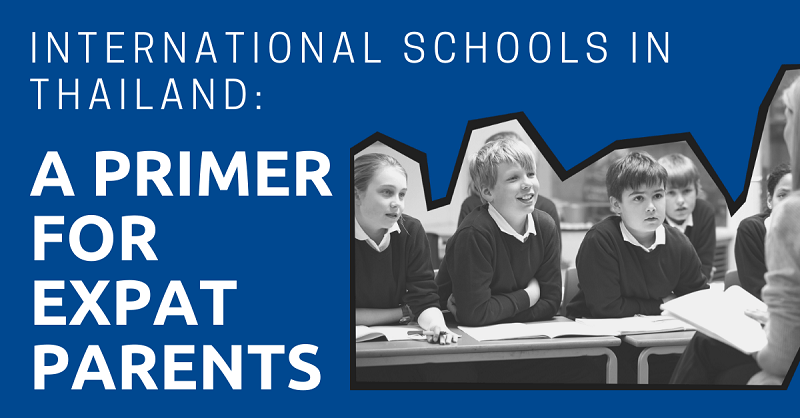
Of all the stresses that moving to a new country generates for families, finding a good school must surely rank as one of the biggest. For the kids, there’s all the hassles of learning in an entirely different setting: the new course materials and the social nightmare of making new friends, many of whom will be of a radically different culture to their own.
For the parents, there’s the financial worries: the course fees, the new uniforms, the new textbooks. There’s also the fear that you’ll make the wrong choice and end up damming your little ones to the kind of crumbling, dysfunctional hell-school that Coolio raps about.
Selecting an international school can be something of an ordeal in and of itself. There are a myriad of things to consider before committing to a school, such as fees, curricula, location, facilities, what services are on offer, and countless more.
Thankfully, we’re here to try to calm some of those worries. Here, then, is a rough guide to what local international schools have to offer.
With ExpatDen Premium, moving to Thailand with a family has never been easier. With your membership, you get immediate and unlimited access to our library containing hundreds of exclusive guides that help your family transition to Thailand hassle-free. Here are just the few of the guides you get access to:
- Detailed Breakdown of Popular Locations for Expats in Thailand
- How to Negotiate Your Rent Down by 40 percent
- Affordable English-Language International Schools in Bangkok
- How to Apply for a US Passport and Citizenship (CRBA) When Your Child is Born in Thailand
…and so much more!
"*" indicates required fields
Disclaimer: This article may include links to products or services offered by ExpatDen’s partners, which give us commissions when you click on them. Although this may influence how they appear in the text, we only recommend solutions that we would use in your situation. Read more in our Advertising Disclosure.
Contents
What is an International School?
Put simply, a Thailand international school is a school which adopts either an international curriculum, such as the International Baccalaureate, Edexcel, or Cambridge International Examinations, or the national curriculum of a different country.
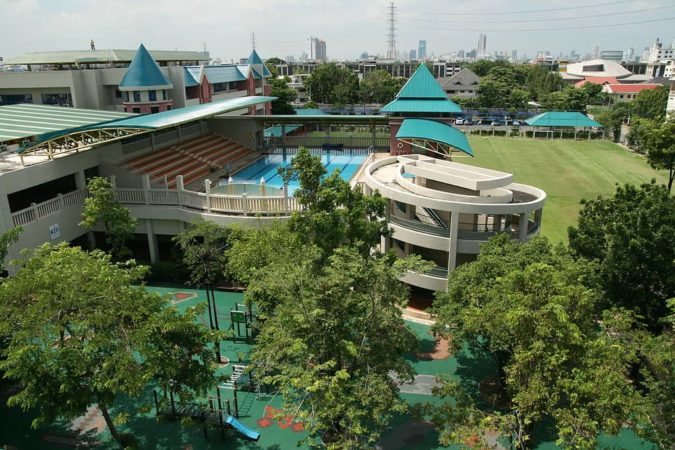
International schools are predominantly aimed at the children of Thailand expats who wish to continue their children’s education with as little disruption as possible while working in Thailand. International schools also appeal to Westerners who have married Thais, settled down in Thailand, and wish to provide a quality education for their kids.
Many international schools in Thailand have benefited from generous funding and boast all the latest modern facilities. In Thailand, where the local education system is perceived as lacking, international schools also tend to appeal to affluent Thais, who would prefer their children to receive a more highly-regarded international education than a local one. As a result, the student body in many international schools tends to be very multicultural.
To locals in Thailand, international schools are thus perceived as the big leagues when it comes to education, and competition to get in to the top-rated schools can be fierce.
Generally speaking, programs at international schools are predominantly in English, although there are usually options to study other languages, including Thai. But international schools are not to be confused with private bilingual schools, which although similar to international schools in many ways (privately owned, large number of international teachers, multicultural student body) follow the Thai curriculum, and often conduct many of their classes in Thai.
The Tier System
When it comes to ranking international schools, those in the know tend to use a loose tier system, separating schools into either Tier 1, Tier 2, or Tier 3, depending on a number of factors.
Here’s how the Tier system in Thailand breaks down.
Tier 1
Tier 1 schools are the best of the best, the cream of the crop, the dog’s…well, you get the picture. They are generally owned by parents or operated as foundation schools.
They boast national accreditation (according to The Office for National Education Standards and Quality Assessment, or ONESQA), and usually multiple international accreditation, such as CIS Council of International Schools, or CIS, and/or New England Association of Schools and Colleges, or NEASC. Teachers tend to be predominately Western and often highly qualified and experienced. Fees at these schools tend to be high—as you’d expect—ranging from 400,000 baht to almost 1,000,000 baht a year.
Tier 2
Tier 2 schools tend to be owned by a group of investors or a conglomerate. They usually boast national ONESQA accreditation and at least one international accreditation.
Fees vary, but in general are a little lower than at Tier 1 schools, ranging between 200,000 baht to 800,000 baht per year. They tend to have fewer Western teaching staff, and in Thailand the majority of the student body will be made up of Thais.
Tier 3
Tier 3 schools are usually owned by an individual or family. Usually, they will only hold local ONESQA accreditation, if that. Fees are much lower at Tier 3 schools, ranging from 80,000 baht to 300,000 baht per term. Staff at these schools are either non-Western or Westerners without home qualifications, and the majority of the student body tends to be Thai.
This tier-ranking is largely subjective, and not always a clear indicator of a school’s quality. You may find some Tier 3 schools, for example, provide a better education and facilities than some Tier 2 schools. Being labeled a Tier 3 school should not in and of itself diminish the hard work both the teachers and students put in at these establishments, and that plenty of students have prospered at schools in all three tiers.
Sending your son or daughter to a lower-tier school should not be perceived as the end of the world by any stretch.
Curriculum
Chances are that your first choice will be to seek out a school which provides the curriculum of your home country, especially if your assignment is temporary or your child has already spent a long time in your home country’s education system.

However, don’t feel as if you are under any obligation to do so, especially if your child is entering education for the first time or your future plans will involve a lot of moving around. It’s always best to seek out a curriculum which best suits your child’s skills and abilities.
International schools follow a curriculum besides that of the host country. In Thailand, there are four main categories.
However, don’t feel as if you are under any obligation to do so, especially if your child is entering education for the first time or your future plans will involve a lot of moving around. It’s always best to seek out a curriculum which best suits your child’s skills and abilities.
International schools follow a curriculum besides that of the host country. In Thailand, there are four main categories.
IB Curriculum
Popular IB Schools in Thailands include KIS International School, NIST International School, and Concordian International School. There is also a diploma option at Ruamrudee and St. Andrews.
The International Baccalaureate is a venerable institution, dating back to 1968. It sets a high, yet manageable, standard for achievement, and places a heavy emphasis on both creative and critical thinking and co-operative learning.
American Curriculum
American Curriculum schools include ISB, Ruamrudee International School, and The American School of Bangkok. It’s difficult to categorize what an American curriculum is specifically, as the US gives a great deal of autonomy to individual states to set their own curriculum standards.
However, generally speaking the American curriculum model covers a broad range of courses in order to provide a well-rounded education and focuses on helping students make the most of their talents.
British Curriculum
British curriculum schools include Bangkok Patana, Harrow International School, Shrewsbury International School, and the various schools that fall under the St. Andrews brand. The British curriculum has been in existence since 1988 and is one of the most common curricula followed by international schools across the world.
British curriculum is heavily student-centered, and focuses on achieving clear goals and standards. Successfully completing a course under the British curriculum nets you an International General Certificate of Secondary Education, or IGCSE, followed by AS and A-Levels.
Other
A handful of international schools in Thailand offer the curricula of different countries besides those mentioned above. The French Curriculum is offered by Le Petite Ecole and Le Lycée Français International de Bangkok.
The German Curriculum is offered at Christliche Deutsche Schule in Chiang Mai and The First Steps International Pre-School in Bangkok.
St. Marks International School and The Australian International School (unsurprisingly) offer the Australian Curriculum.
Finally, the Singaporean Curriculum is offered by schools such as Thai-Singapore International School, or TSIS, Singapore International School of Bangkok, or SISB, and Anglo-Singapore.
Things to Consider Before Enrolling
There are over 150 international schools in Thailand, so there’s no shortage of choices. And it’s easy to fall into the mistake of comparing the cost of study and aiming solely for the most expensive, assuming that most expensive equals best.
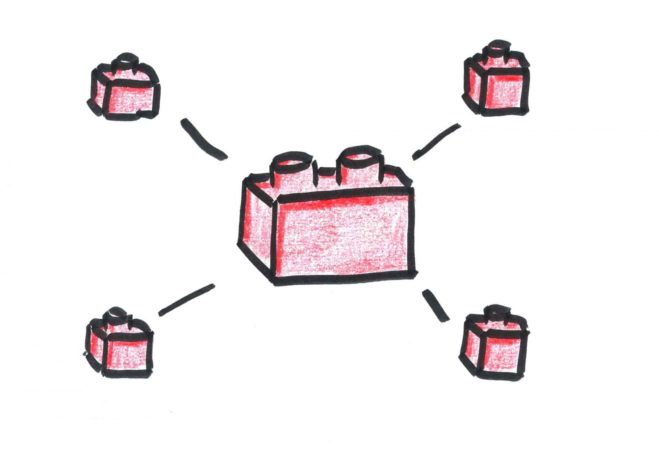
While it’s true that you probably won’t buy a quality education and the opportunity to schmooze with future world leaders at the cheapest schools, price does not necessarily equal quality, or suitability. Especially as there are plenty of schools that are more than happy to cash in on this attitude.
It’s far more sensible, then, to take some of the following into consideration when choosing a school.
Accreditation
A good indicator of a school’s quality is to check with which bodies it holds accreditation. In Thailand, external quality assurance is guaranteed by the aforementioned ONESQA.
There are also many different international organizations willing to accredit schools, of varying degrees of respectability. Some of the larger and more-respected organisations include:
- Council of International Schools (CIS)
- New England Association of Schools and Colleges (NEASC)
- Western Association of Schools and Colleges (WASC)
- Centre for British Teachers (CfBT)
The best schools may also be members of international organizations such as the East Asia Regional Council of Overseas Schools or International Schools Association of Thailand.
One such school is KIS International School. KIS offers the International Baccalaureate (IB) curriculum and is accredited by both the Council of International Schools and Office of National Education Standards and Quality Assurance (ONESQA).
Location
It can’t be stressed enough in Bangkok: make sure you research where your school is before enrolling. While a handful of top-tier international schools have fairly centrally located campuses (Wells, St. Andrews Sukhumvit, NIST), many others such as Ruamrudee, ISB, and Bromsgrove are located in far-flung suburbs, a long way from Bangkok’s mass transit system.
Many of these places will offer their own transportation, but do factor the inevitable Bangkok traffic into this.
Few kids will have the patience to tolerate a two-hour commute between Sukhumvit and Minburi twice a day, nor waking up at an unholy hour in order to do so. Some of the schools like Bromsgrove do offer boarding facilities to help mitigate this, but obviously boarding is not suitable for nor desired by every child.
Teachers
What makes a quality teacher is a rather contentious issue, as a quick browse of any teaching forum will soon inform you. Even more contentious is the endless debate on whether or not Western-educated teachers make better educators than teachers from non-Western countries.
Either way, teachers at top-tier international schools tend to be overwhelmingly Western, home-country qualified and experienced, with that percentage growing smaller as you drop down the tiers.
At Tier 2 schools, Western teachers usually handle core academic subjects, with non-Westerners taking up the remainder, and at Tier 3 schools Western teachers are very much the minority and occasionally unqualified, or educated only up to bachelor’s degree level.
This is not necessarily a slight against non-Western teachers, nor should it be perceived to be, but the fact is that hiring Western teachers is expensive, and a full roster of qualified, experienced Western teachers—all expecting salaries comparable to the West or preferably better—is simply beyond the budget of many international schools.
There are plenty of exemplary, hard-working teachers from non-Western backgrounds, and while there may be personal reasons for parents to prefer the majority of their children’s teachers be of Western extraction (e.g shared cultural values, language ability), on the whole nationality shouldn’t in and of itself be a reason to dismiss a teacher.
When it comes to assessing a school’s teachers, qualifications and experience are far better benchmarks than nationality. Many schools will advertise the fact that their teachers come from prestigious academic backgrounds, and it’s usually not difficult to scrounge up a list of teachers and their qualifications.
Generally speaking, a teacher at a Tier 1 international school will:
- hold—at minimum—a bachelor’s degree, preferably in the subject they’re teaching.
- hold a home-country teaching certification like the PGCE in the UK.
- hold Qualified Teacher Status, or QTS, or be certified to teach by their home state in the USA—this is not necessarily the same as holding a PGCE or equivalent. Fully-qualified teachers will generally have completed at least a year in a home-country school in order to qualify.
- have at least 2 years post-qualification experience, preferably in either a home-country school or another international school.
- have a high TOEIC score if the teacher is not a native English speaker.
At lower-tier schools, the benchmark for entry will of course be lower, with teachers not holding QTS or lacking experience and so on.
Class Size
When it comes to class size, smaller is better. Small classes are more personal. The teacher can better identify your daughter’s problems rather than have them become a face in the crowd, and they cater classes to your son’s skills, abilities, and interests. Many of the better international schools will set a cap on class size for these reasons.
On the flip side, this does limit the number of students a school can take on, and exacerbates competition for entry. This could be a good thing for the school, but a potentially stressful and frustrating experience for you or your children.
When it comes to school size, opinions are generally more divided. Some prefer a larger school with more facilities, more funding, more chances to make friends. After all, your son doesn’t want to be cooped up in a small class with people they hate.
Others prefer a smaller school with a better sense of community. Your mileage may vary. Either way, it’s worth taking a little time to decide what works for your children, and doing a little research beforehand.
Extra-curricular Activities
Extra-curricular activities cover everything from school trips to sports and performing arts. Obviously you’ll want to find a school which best caters to your daughter’s interests, and there are some schools that excel in certain areas.
NIST boasts the Chelsea FC Football Programme, in which they have partnered up with Chelsea FC coaches to provide exemplary football training. While Harrow offers a huge range of extracurricular activities including tae kwon do, kayaking, muay Thai (Thai boxing), ballet, archery, and trampolining. Many international schools also offer residential and field trips to famous places around Thailand and beyond.
Learning Support and Counseling
If your son or daughter requires additional learning support, it’s worth finding out what facilities the school provides beforehand. Many of the top schools will have a dedicated Special Needs Programme for students with learning difficulties, and it’s also common for schools that conduct classes in English to offer an English as an Additional Language Programme, or EAL.
It’s also worth finding out what counseling facilities the school offers. Larger schools such as NIST will possess a whole counseling team dedicated to helping students with academic and emotional support. While smaller schools may only boast a single counselor.
Depending on your child’s needs, finding this out beforehand may end up playing a key part in your decision to choose a school. However, at some schools this extra counseling may be added to the bill.
Religion
Another thorny issue. A large number of international schools in Thailand were founded by missionaries and are still nominally Christian. The extent to which Christian values influence what is taught varies greatly by school. So if you’re non-religious or of another faith it might be worth doing a little research into this beforehand.
Just the same, if you’re looking to enroll your son or daughter into a school with a specific religious program, you’ll want to do the research as well.
Fees
No one ever claimed an international school education would come cheap. In addition to the already sizeable course fees, there are a number of hidden fees that are standard at many international schools.

Application Processing Fee
Before your child has even entered into the running, you may be required to pay a non-refundable application processing fee. These are generally a fairly nominal sum compared to what comes later, between 4,000 baht to 6,000 baht for the top-tier schools.
Registration Fees
Registration fees are one-off, generally non-refundable payments made by new students upon enrolling at an international school. They can be quite steep, but around 200,000 baht is fairly standard.
Campus Development Fees
Campus development fees are payments made to keep the school’s facilities top-notch. They also tend to be pretty steep. For example, NIST’s campus development fee is either a refundable one-off payment of 575,000 baht, or a non-refundable annual payment of 55,000 baht.
Boarding Fees
Boarding fees will vary depending on a number of factors, including the student’s nationality and whether or not they’re opting for weekly or full boarding. However, you can expect to pay anywhere from 200,000 baht to 600,000 baht per year.
School Calendar Year
International schools tend to loosely follow the calendars of their home countries, running from August to June, with breaks for Christmas and Easter.
This is notably different from the Thai school calendar, which runs from May to February or March, with a long break over April and officially no breaks for Christmas, although many do close over New Year.
This is something to consider if your child is moving from a Thai school to an international school, as they may have a long break in between leaving one school and starting another.
Now, on to You
Deciding on an international school for your son or daughter is challenging. Thailand has a lot good international schools and it all comes down to your child’s educational needs and the school that can best meet those needs.
Now that you know the basics of how international schools in Thailand operate, you’ll be on your way to making a well-informed choice that will benefit your child.



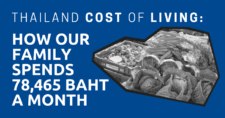
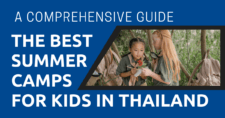
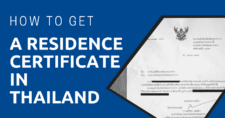



Very Informative for expatriate parents. Is there any availability of Islamic International School?